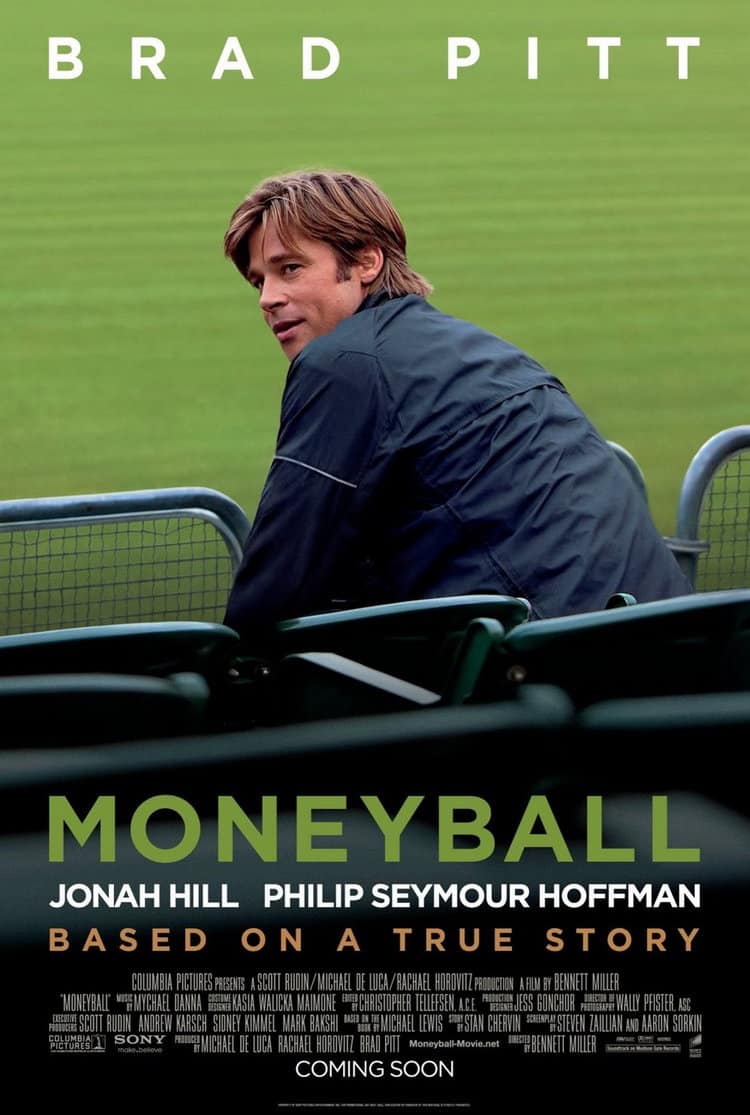‘Moneyball’ isn’t a sports movie, it’s about HR—here’s why
Moneyball is a 2011 baseball film starring Brad Pitt - that just happens to hold the key to the next HR revolution.

Quality cinema, Brad Pitt, professional sports. If you’re into at least one of these, you’ve probably watched 2011’s Moneyball. If you haven’t – well, first off, we highly recommend you log in to the video streaming service of your choice and take a couple of hours out of your schedule to check it out. But for those of you who are too busy for that (and those who may have already watched the movie and need a short recap), Moneyball is a biographical film about the famed General Manager of the Oakland Athletics baseball team, Billy Beane (played by Brad Pitt) and his literally game-changing approach to team management and strategy.
Faced with severe budgetary constraints and hurt by poaching of his best players by other, more affluent teams, Beane turns to Peter Brand – a young Yale economics graduate with some interesting ideas about baseball – to try and turn the team around.
To understand what Brand’s ideas are – and, more importantly, how they tie in with managing human resources – we first need to talk a little bit about the history of baseball.
Baseball, Statistics and SABRmetrics
Like many other sports, baseball has a huge fan community – but one thing that sets baseball fans apart is their love of statistics. Followers of baseball have been meticulously recording and analyzing data about everything from players’ batting speed to pitching averages in an attempt to assess the “value” of a player to their team, since 1858 at least.
In the 1970s, a member of the Society for American Baseball Research (SABR) by the name of Bill James came to believe that people misunderstood the way baseball was played, and that they were unaware of several key factors that had a huge influence on the outcome of the game. To prove his thesis, he turned to deep statistical analysis as a means of demonstrating its worth, thereby establishing the concept of SABRmetrics – and the profession of “SABRmatician.”
It is this field of study that Billy Beane (Brad Pitt’s character) turns to, with the help of the Yale-trained economist Peter Brand, in order to map out the gaps in his team’s abilities, and to begin to search for talent that, despite not being recognized as “high quality” or “high value,” will still be able to propel the Athletics forward. Rather than looking at traditional skills deemed desirable by baseball enthusiasts and professionals, Brand and Beane examined what the team’s concrete, numerical goals were, and what specific player abilities were needed to reach these goals, while still staying within the budgetary limitations set by the team’s owners. Do you see the HR and management connection yet?
Using this approach, the Athletics manage to make baseball history, setting a record 20 consecutive win streak and almost win the 2002 American League Division Series, despite the severe hindrances they faced after their star players had left or been bought-out in the beginning of the season.
The Dangers of Mis-Assessing Your Talent
Beane’s most significant struggle throughout Moneyball is dealing with the team’s coach, who overvalued traditional baseball skillsets, while undervaluing the synergetic potential of the “budget” players Beane had cobbled together. The coach insisted each player play according to their designated role, rather than according to the overall abilities they have that contribute to specific situations in the field. With this approach, the team is almost driven to the ground – and unfortunately, it isn’t limited to just baseball.
We often look at, and assess individuals within our companies, based on their job descriptions. In baseball, it can be “pitcher” or “first baseman”, while in tech, for instance, it can be “software developer” or “campaign manager”, without taking into account other abilities that they have that can be highly relevant to the organization’s overall needs and goals.
While Beane has put away these preconceived notions, it was only when his team’s coach embraced his new data-driven approach that the team was able to break forward.
Recognizing Gaps, Discovering Abilities
Until Billy Beane met Peter Brand, he was asking the wrong questions about his players. He was assessing them based on notions and traditions, rather than on data-derived goals.
It doesn’t matter what industry or field your company may be operating in – it’s likely that, much like baseball, it too has its own set notions and “universally known truths” regarding how things ought to be done.
Brand and Beane were able to break out of this mentality by looking at concrete, well defined goals, and then matching relevant players to these goals based on empirical statistics based on their actual performance. This was made possible by the meticulous data-gathering practices of baseball fans – but in order to translate this mold-shattering approach into the world of business, leaders need to be able to determine what “winning” is, and, perhaps more importantly, who their players are, and what real abilities they bring to the field with them.

Playing a Different Game
Another reason the Oakland Athletics were able to execute their historic and unprecedented 2002 20-win streak was the fact that they weren’t playing the same game as the other teams around them. Sure, they were still playing baseball, but while the other teams were concentrating on hitting home runs and pitching fastballs, the Athletics were focusing on other parameters. To those who didn’t understand their strategy, it made the Athletics’ gameplay seem chaotic and unpredictable; even more importantly, it made it more difficult for opposing teams to counteract strategic moves, because they couldn’t tell what their ultimate objective was, both on and off the field. This made gameplay decisions just as bewildering as the recruitment efforts led by Beane – and allowed him to pick the talent he wanted without facing any competition. Essentially, he was able to see a treasure trove of untapped potential and value in individuals who had already been discarded by teams and managers with more significant means.
Staying Ahead of the Curve
Following the Oakland Athletics’ wildly successful 2002 season, Billy Beane is contacted by John W. Henry, owner of the Boston Red Sox – one of baseball’s wealthiest and most legendary teams. Henry offers Beane the position of General Manager, and explains to him that his approach has changed the game of baseball forever, and that anyone not willing to adopt his methods was, from that point onward, a dinosaur. While Beane declined the offer, the Red Sox went on to implement his approach with a different manager, and won the World Series a few short years later.
The question to ask, then, is what the equivalent of SABRmetrics in the business world is today. What tool or approach allows CHROs to see talent and potential where others don’t, and lets executives unflinchingly map out goals and the organizational gaps that stand in their way of reaching them.
Are Talent Marketplaces Enterprise-level Peter Brands?
If you watch Moneyball through the lens of an HR professional, the parallels between Peter Brand’s disruptive approach to baseball and the Talent Marketplace revolution are impossible to ignore.
Put simply, a talent marketplace is a platform that allows managers throughout the entire organization to post listings for open positions, temporary assignments, short- and long-term part-time projects, mentorships, and any other initiative that talent within the organization is needed for.
Using AI and smart algorithms, the platform can then match relevant positions to employees, and allow the organization to benefit from the untapped ambitions and abilities of people it employs, regardless of what they were originally hired to do.
Deploying a company-wide talent marketplace does more than allow you to move talent to high-priority areas of your business at ease, though. Intelligently mapping the goals and professional experience of employees provides companies with the business equivalent of SABRmetrics, and lets decision makers utilize their human resources in ways that may seem counterintuitive in more traditional environments. This allows you to do more with what and who you already have, and opens up new possibilities and immediate opportunities that can seem impossibly distant without the insights the talent marketplace provides, even with budgetary constraints.





